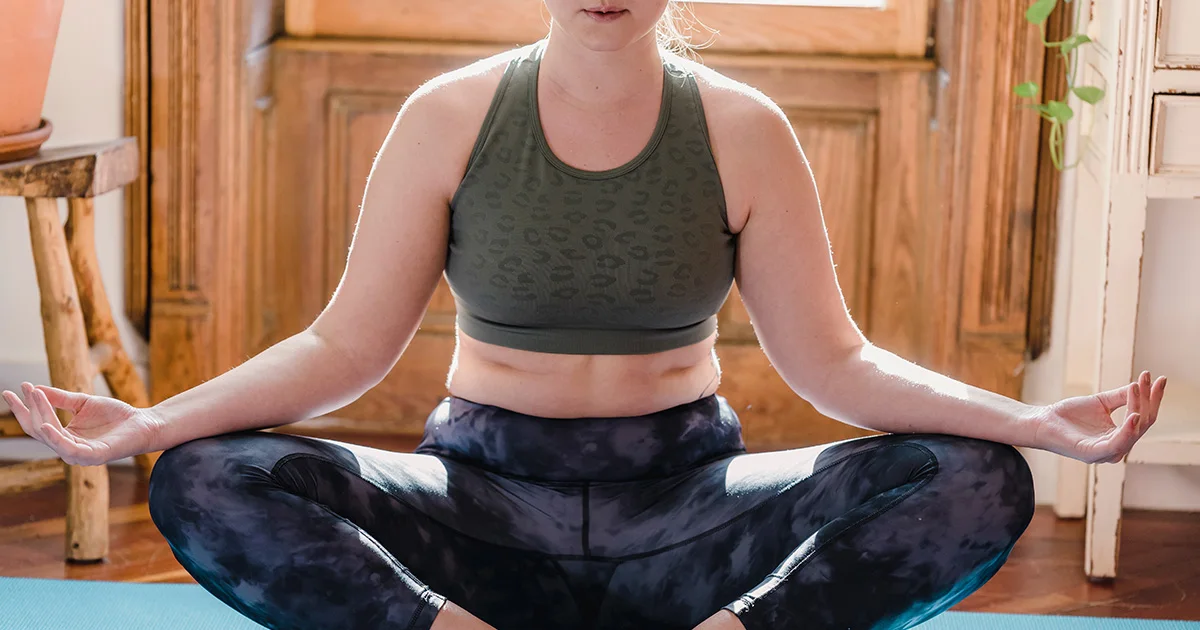10 science-based benefits of Pilates

Reviewed by Yael Cooperman, MD, Ro,
Written by Amelia Willson
last updated: Oct 08, 2021
5 min read
Here's what we'll cover
Pilates is a specific type of workout that’s been used to rehabilitate and tone muscles since the 1920s.
The low-impact workout has a long roster of celebrity fans, including David Beckham, Vanessa Williams, and Hilary Duff. Along with health benefits like building muscle and preventing injuries, Pilates also has a reputation for building long, lean muscles, improving posture, and increasing flexibility.
Whether you want to work out like the stars or are looking for an effective yet low-impact workout, here’s what Pilates can do for you.
Weight loss
Get access to GLP-1 medication (if prescribed) and 1:1 support to meet your weight goals
What is Pilates?
Pilates involves a series of exercises that incorporate techniques from yoga, ballet, martial arts, meditation, and calisthenics. It was developed by a trainer named Joseph Pilates over a century ago and is based on the following six principles:
Centering
Concentration
Control
Precision
Breathing
Flow
During a Pilates class, you move through exercises in a controlled manner, which requires focus, concentration, breathwork, and strength. Pilates is all about learning how to use your core strength to maintain healthy alignment, improve balance and muscle tone, and grow your mind-body awareness.
There are two types of Pilates: mat-based and reformer Pilates. In mat-based Pilates, you perform exercises on the floor. The technique uses your body weight and gravity to provide resistance.
With Reformer Pilates, equipment is used to provide additional resistance. You perform exercises using a Reformer machine, weights, or other resistance equipment like bands.
Health benefits of Pilates
One of the great things about Pilates is you can do it without equipment, making it accessible for just about anyone. The exercises are also easy to modify, which is helpful if you have an injury or want a more customized workout.
From improved well-being to better posture, check out these 10 health benefits of Pilates.
1. Improved muscle strength and tone
The exercise sequences in Pilates place a special emphasis on control and alignment. By focusing on your core muscles (the muscles in your abdomen and pelvic floor), Pilates can help you support your spine and overall posture (Kloubec, 2011).
And while the focus is around your core, all muscle groups benefit. One study found that after three months of practicing Pilates twice per week, a group of older women enjoyed significant improvements in their upper and lower body strength in addition to increased abdominal strength (Bergamin, 2015).
2. Better posture
Take up a regular Pilates workout, and you may find yourself slouching less often.
Pilates helps you become more aware of your body positioning so you can hold yourself differently. This, along with bolstered body strength, can improve your posture. Because you have a greater awareness of how you’re holding your body (and with a stronger core), you’ll be able to hold yourself upright more easily and avoid slouching, which is a contributor to neck pain and joint problems.
3. Back pain relief
Nearly 1 in 4 people suffer from chronic lower back pain. Research has found practicing Pilates a few times a week can alleviate back pain (Eliks, 2019).
Plus, the postural improvements you develop from the exercises help you become aware of how your body weight is distributed while walking, which may provide further relief (Kloubec, 2011).
4. Injury prevention and rehabilitation
When Joseph Pilates invented the technique in the 1920s, he sought to create an exercise program that made people stronger and healthier.
Today, Pilates moves are still used in rehabilitation and can be recommended for people recovering from hip or knee replacement surgery (Kloubec, 2011). A study of people recovering from knee replacement surgery found that when Pilates was added to a standard exercise routine, it significantly improved their balance. It also improved overall quality of life compared to standard exercise alone (Karaman, 2017).
Along with daily practices like yoga, Pilates can help keep you healthy. It strengthens your core muscles and improves spinal alignment, which can prevent disorders of the neck and shoulders. It can also improve stability for older adults, reducing the risk of falls, which can be devastating as we age (Kloubec, 2011).
5. Better coordination and balance
Multiple studies have shown how Pilates benefits balance––especially in older adults. After a 10 week Pilates reformer program, a group of adults aged 65 and older reported improved balance, mobility, and range of motion in their hips and ankles (Roller, 2018).
Those in the program also felt more confident and better protected against falls. Since they’re less worried about a mishap, they can focus on staying mobile and active, further protecting them from injury (Josephs, 2016).
6. Improved flexibility
One of the benefits of regular stretching is improved flexibility. Because Pilates involves breathwork, lengthening, and stretching, this type of exercise is no different (Ashrafinia, 2015).
One study found that In just eight weeks, a group of Pilates beginners had increased flexibility in their shoulders and lower back (Kloubec, 2011). Increased flexibility can reduce the chance of injury, too.
7. Increased mental well-being
Pilates has benefits off the mat as well. It can improve mental health by lifting your mood and even relieving depression. Pilates has also been shown to boost energy levels (Fleming, 2018).
In a study of postpartum women, home Pilates programs reduced physical and mental fatigue while making participants feel more motivated. Pilates has also been shown to relieve depression, fatigue, and quality of life for breast cancer patients (Ashrafinia, 2015).
8. Less stress
Pilates can also relieve stress on both a personal and biological level.
In a study of sedentary women, those who practiced Pilates frequently for eight weeks had lower levels of cortisol, also known as the stress hormone. Beyond these lab results, participants also said that they felt less stressed, too (Ahmadi, 2019).
9. Better sleep
Of course, with less stress, it’s easier to sleep. It’s no surprise then that Pilates has also been shown to improve sleep quality.
Research has also found people who practice Pilates feel less tired during the day. In general, studies show that any kind of exercise can help you sleep longer and more deeply, which also reduces daytime sleepiness (Leopoldino, 2013; Dolezal, 2017).
10. Weight loss
Given the low-impact nature of Pilates, it burns less fat than aerobic exercise. Still, you might notice weight loss, according to some studies. In just 4–8 weeks, Pilates has been shown to lower body mass index (BMI), reduce body fat, and decrease waist, chest, and arm circumferences (Kloubec, 2011; Ahmadi, 2019).
Tips for getting started
Ready to unlock the benefits of Pilates for yourself? All you need is a mat to get started. Here’s what else you need to know.
Even a single weekly session of Pilates can prove beneficial. Most studies on Pilates report that a 60-minute class practiced 1–3 times a week yielded benefits (Eliks, 2019; Roller, 2018; Josephs, 2016).
Beginners can start with basic Pilates exercises and progress as they advance. You can watch Pilates videos online or go to a local yoga or Pilates studio to practice in person.
Is Pilates safe for me?
Pilates is low-impact and designed to prevent injury, but some people should take special care when starting out. Speak to a physical therapist or health professional first if you fit into the following categories:
Have a chronic health condition or injury
Recently underwent surgery
Are an older adult
Are pregnant or recently gave birth
Pilates instructors don’t have to be licensed, so look for certified instructors and get recommendations, especially if you have a specific concern like back pain relief.
The benefits of Pilates can be enjoyed by all. Consider adding Pilates to your exercise routine for a happier mind and healthier body.
DISCLAIMER
If you have any medical questions or concerns, please talk to your healthcare provider. The articles on Health Guide are underpinned by peer-reviewed research and information drawn from medical societies and governmental agencies. However, they are not a substitute for professional medical advice, diagnosis, or treatment.
Ahmadi, H., & Mehravar, M. (2019). The effect of an eight-week Pilates exercise regimen on stress management and cortisol levels in sedentary women. Journal of Physical Activity and Hormones, 3 (4), 37-52. Retrieved from http://jpah.iaushiraz.ac.ir/article_673139.html
Ashrafinia, F., Mirmohammadali, M., Rajabi, H., Kazemnejad, A., Sadeghniiat Haghighi, K., & Amelvalizadeh, M. (2015). Effect of Pilates exercises on postpartum maternal fatigue. Singapore Medical Journal, 56 (3), 169–173. doi: 10.11622/smedj.2015042. Retrieved from https://pubmed.ncbi.nlm.nih.gov/25820848/
Bergamin, M., Gobbo, S., Bullo, V., Zanotto, T., Vendramin, B., Duregon, F., Cugusi, L., Camozzi, V., Zaccaria, M., Neunhaeuserer, D., & Ermolao, A. (2015). Effects of a Pilates exercise program on muscle strength, postural control and body composition: results from a pilot study in a group of post-menopausal women. Age (Dordrecht, Netherlands), 37 (6), 118. doi: 10.1007/s11357-015-9852-3. Retrieved from https://pubmed.ncbi.nlm.nih.gov/26578458/
Dolezal, B. A., Neufeld, E. V., Boland, D. M., Martin, J. L., & Cooper, C. B. (2017). Interrelationship between sleep and exercise: A systematic review. Advances in Preventive Medicine,
doi: 10.1155/2017/1364387. Retrieved from https://pubmed.ncbi.nlm.nih.gov/28458924/
Eliks, M., Zgorzalewicz-Stachowiak, M., & Zeńczak-Praga, K. (2019). Application of Pilates-based exercises in the treatment of chronic non-specific low back pain: state of the art. Postgraduate Medical Journal, 95 (1119), 41–45. doi: 10.1136/postgradmedj-2018-135920. Retrieved from https://pubmed.ncbi.nlm.nih.gov/30636192/
Fleming, K. M., & Herring, M. P. (2018). The effects of Pilates on mental health outcomes: A meta-analysis of controlled trials. Complementary Therapies in Medicine, 37, 80–95. doi: 10.1016/j.ctim.2018.02.003. Retrieved from https://pubmed.ncbi.nlm.nih.gov/29609943/
Josephs, S., Pratt, M. L., Calk Meadows, E., Thurmond, S., & Wagner, A. (2016). The effectiveness of Pilates on balance and falls in community dwelling older adults. Journal of Bodywork and Movement Therapies, 20 (4), 815–823. doi: 10.1016/j.jbmt.2016.02.003. Retrieved from https://pubmed.ncbi.nlm.nih.gov/27814862/
Karaman, A., Yuksel, I., Kinikli, G. I., & Caglar, O. (2017). Do Pilates-based exercises following total knee arthroplasty improve postural control and quality of life?. Physiotherapy Theory and Practice, 33 (4), 289–295. doi: 10.1080/09593985.2017.1289578. Retrieved from https://pubmed.ncbi.nlm.nih.gov/28443790/
Kloubec, J. (2011). Pilates: how does it work and who needs it? Muscles, Ligaments and Tendons Journal, 1( 2), 61–66. Retrieved from https://pubmed.ncbi.nlm.nih.gov/23738249/
Leopoldino, A. A., Avelar, N. C., Passos, G. B., Jr, Santana, N. Á., Jr, Teixeira, V. P., Jr, de Lima, V. P., & de Melo Vitorino, D. F. (2013). Effect of Pilates on sleep quality and quality of life of sedentary population. Journal of Bodywork and Movement Therapies, 17 (1), 5–10. doi: 10.1016/j.jbmt.2012.10.001. Retrieved from https://pubmed.ncbi.nlm.nih.gov/23294677/
Roller, M., Kachingwe, A., Beling, J., Ickes, D. M., Cabot, A., & Shrier, G. (2018). Pilates Reformer exercises for fall risk reduction in older adults: A randomized controlled trial. Journal of Bodywork and Movement Therapies, 22 (4), 983–998. doi: 10.1016/j.jbmt.2017.09.004. Retrieved from https://pubmed.ncbi.nlm.nih.gov/30368346/









